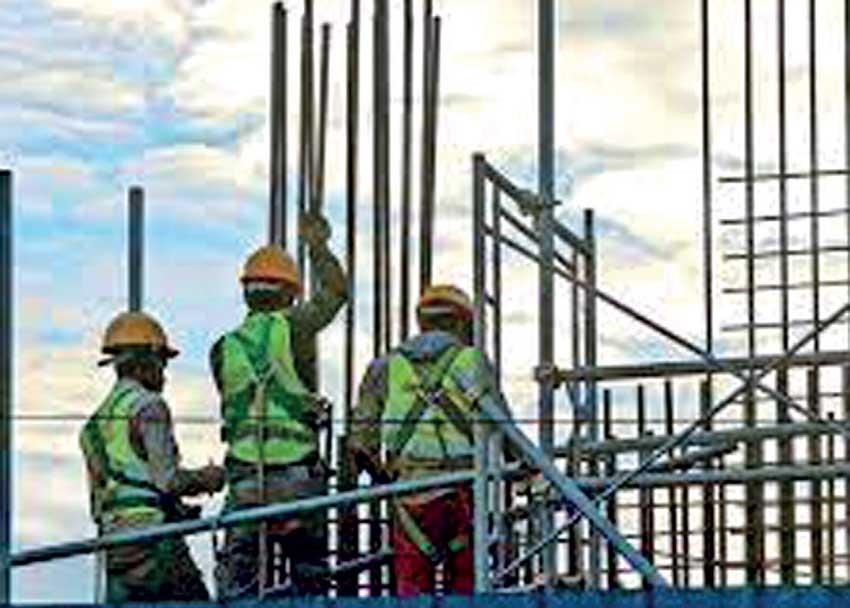31 Dec 2021 - {{hitsCtrl.values.hits}}

Sri Lanka’s construction sector and the complementary real estate activities lost steam during the third quarter ended in September from a five-year high growth recorded by the former in the preceding quarter partly due to the high base effects in the same period last year and the implications which were likely to have stemmed from the foreign exchange crisis which created shortages in certain key construction materials such as cement.
The construction activities, which account for 5.7 percent of the total economic output of the country fell by 6.0 percent in the 2021 third quarter from the same period last year, according to the Gross Domestic Product (GDP) data measured based on the 2010 constant market prices, which removes the element of inflation.
This marks a significant decline from the 18.2 percent jump seen in such activities during the June quarter which was largely made possible by the lower base effects in the same three months in 2020 as much of such activities came to a grinding halt due to near two-month long lockdowns imposed from the onset of
the pandemic.
Such restrictions plunged the industry into a 30 percent contraction, but it regained momentum thereafter until the most recent quarter ended in September 2021.
Meanwhile, the real estate activities, including ownership of dwelling which together accounts for a substantial 6.1 percent of the total GDP grew by 1.6 percent, decelerating from 5.5 percent growth recorded in the June quarter over
a year ago.
Sri Lanka has a red hot real estate market at all three levels - luxury, affordable-luxury and below - and the sector along with constructions became few such sectors which remained resilient and grew to become extremely strong despite pandemic related restrictions.
This was largely due to the hunt for housing in urban and suburban settings by the growing middle and upper middle income classes which aspires a city life which provides multiple conveniences such as close proximity to place of work, schools, shopping malls, recreational activities and other amenities which help to lead a hassle free life by mostly busy working families.
The ultra-low interest rates also helped drive the housing prices to astronomical high levels, which in fact drew away the first time house buyers.
Meanwhile, the cement production, which is mostly used as a proxy for the construction sector health showed that in the first nine months through September the cement production had increased by robust 18.1 percent to 3,335 metric tonnes, but the total cement use including imports, which remained under control, rose by 0.9 percent to 5,417 metric tonnes, reflecting that the cement shortages may have had some adverse implications on the sector during the three months.
Besides, several other items which were either imported or under import controls shot up in prices by several multiples sending the cost of construction through the roof both due to the global commodities price boom and the local producers raising their prices to sky high levels to make hay while
the sun shines.
16 Nov 2024 32 minute ago
16 Nov 2024 3 hours ago
16 Nov 2024 5 hours ago
16 Nov 2024 5 hours ago
16 Nov 2024 6 hours ago